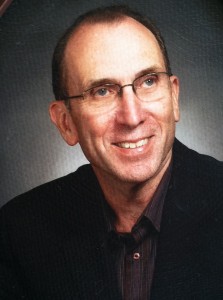
 Jon Collins, risk management innovator and recent recipient of the da Vinci Lifetime Achievement Award for Space Safety, died on August 10, 2012. He is survived by his wife Nancy and four children.
Jon Collins, risk management innovator and recent recipient of the da Vinci Lifetime Achievement Award for Space Safety, died on August 10, 2012. He is survived by his wife Nancy and four children.
Collins’ interest in space started from a young age as an avid builder of model air planes. After briefly considering a career in architecture, Collins dove wholeheartedly into aeronautical engineering, ultimately achieving a PhD in aerospace engineering from the University of California Los Angeles (UCLA) and a professional engineering license. Along the way, he began to acquire a reputation as something of an innovator in the field of risk management.
While working on a Masters degree in mechanical engineering at the University of Colorado, Collins created his first mathematical model of what would happen to an exploding rocket. He was working at the Martin Company at the time, but did not remain there for long. Moving to Los Angeles, California with his wife, Collins started teaching statistics and operations research at Northrop University. It was the beginning of his second lifelong passion; Collins continued teaching at universities, for US National Ranges, and then for the International Association for the Advancement of Space Safety for the remainder of his life.
At the same time, though, Collins was pushing further into the field of hazard prediction. In 1960 he started working for TRW, a company with a major focus on safety system design. While there, Jon forwarded research in probabilistic applications in dynamics and mechanics, including launch and reentry safety analyses of the Apollo Service module and several missile weapons systems.
Collins wanted to do more, so he left TRW for startup J.H. Wiggins Company, whose mission was to apply the principles of risk analysis to engineering. There he started putting together a team of range safety modelers and analysts. He introduced the concept of a debris footprint and convinced NASA to perform flight safety risk analysis on the Space Shuttle. His groundbreaking analyses included modelling of explosions, evaluating glass breakage hazards and structural response due to the shockwaves, and determining the trajectories and impact distribution of burning and non-burning debris.

Debris footprints, like this one of a potential Hubble deorbit, are now commonplace due to the work of Jon Collins (Credits: Ritchard Shidemantle/University of Colorado).
In 1982 Collins launched ACTA, Inc. with partner Jim Hudson. The consulting company was dedicated to enhancing risk management of dangers to civilians from space activities. His work since has become the basis for risk management guidelines in space agencies around the globe. Among his significant accomplishments was devising a way to communicate risk profiles to decision makers. This was particularly key when assessing events of low risk to a large population, a concept that many leaders found difficult to grasp in the guise of the traditional statistics of casualty expectation. Collins tackled the diversity of risk models in use across the space industry, quantifying their relative levels of uncertainty to provide greater transparency in the decision making process.
Collins’ achievements and the cadre of professionals he trained in his methods over the years may yet accomplish his ultimate goal: to allow nations everywhere to explore space in safety, both to the spacefarers themselves as well as those they leave behind on Earth.

















































































































![A trajectory analysis that used a computational fluid dynamics approach to determine the likely position and velocity histories of the foam (Credits: NASA Ref [1] p61).](https://www.spacesafetymagazine.com/wp-content/uploads/2014/05/fluid-dynamics-trajectory-analysis-50x50.jpg)



Leave a Reply